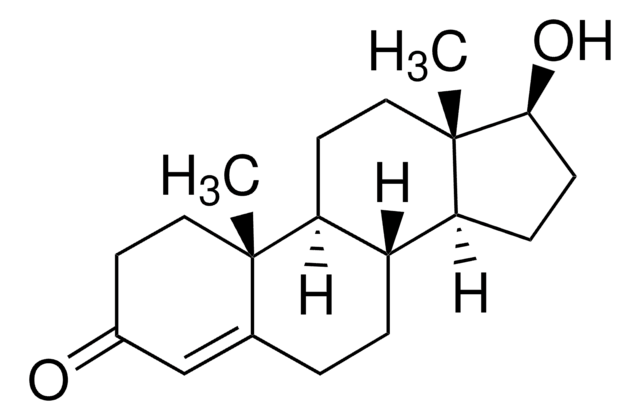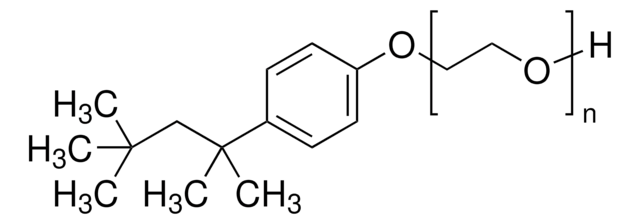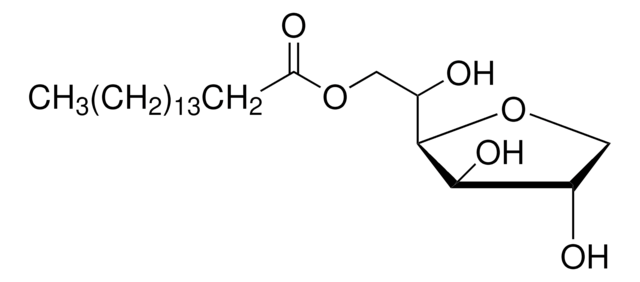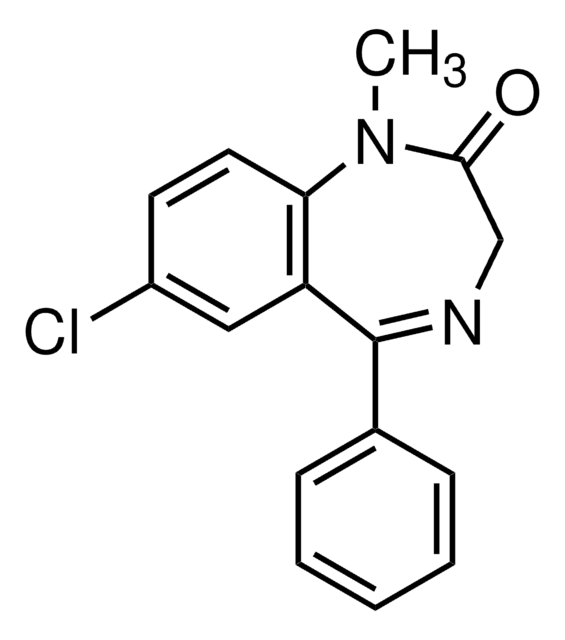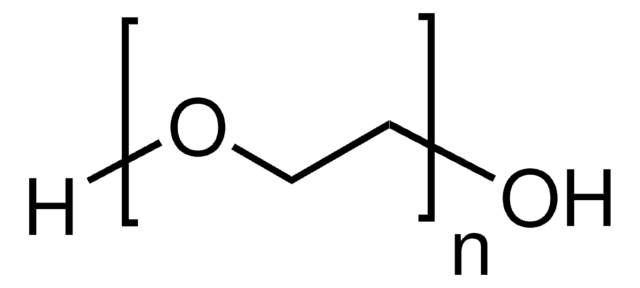P2263
Polyethyleneglycol Bisphenol A Epichlorohydrin Copolymer
mol wt 15,000-20,000 Da
Synonym(s):
Polyethylene glycol compound
Sign Into View Organizational & Contract Pricing
All Photos(2)
About This Item
Linear Formula:
[C15H16O2·C3H5ClO·(C2H4O)n·H2O]x
CAS Number:
MDL number:
UNSPSC Code:
12352201
PubChem Substance ID:
NACRES:
NA.25
Recommended Products
Looking for similar products? Visit Product Comparison Guide
General description
Polyethyleneglycol bisphenol A epichlorohydrin copolymer is a polyethylene glycol compound that has been shown to protect the intestinal epithelium against microbial invasion during stress.
Application
Polyethyleneglycol bisphenol A epichlorohydrin copolymer has been used on glioma cells to compare therapeutic strategies for malignant gliomas.
Preparation Note
Consists of 2 molecules of polyethylene glycol (mol. wt. 7,000-9,000) joined internally through a homobifunctional aromatic spacer.
Storage Class
11 - Combustible Solids
wgk_germany
WGK 1
flash_point_f
Not applicable
flash_point_c
Not applicable
ppe
Eyeshields, Gloves, type N95 (US)
Certificates of Analysis (COA)
Search for Certificates of Analysis (COA) by entering the products Lot/Batch Number. Lot and Batch Numbers can be found on a product’s label following the words ‘Lot’ or ‘Batch’.
Already Own This Product?
Find documentation for the products that you have recently purchased in the Document Library.
Customers Also Viewed
Shigeru Yamaguchi et al.
Photochemistry and photobiology, 86(4), 964-971 (2010-05-25)
Titanium dioxide (TiO(2)) is thought to be a photocatalytic agent excited by UV light. Our aim was to investigate the photocatalytic antitumor effect of water-dispersed TiO(2) nanoparticles on C6 rat glioma cells and to evaluate the treatment responses by the
Shigeru Yamaguchi et al.
Ultrasonics sonochemistry, 18(5), 1197-1204 (2011-01-25)
Sonodynamic therapy is expected to be a novel therapeutic strategy for malignant gliomas. The titanium dioxide (TiO(2)) nanoparticle, a photosensitizer, can be activated by ultrasound. In this study, by using water-dispersed TiO(2) nanoparticles, an in vitro comparison was made between
Licheng Wu et al.
Gastroenterology, 126(2), 488-498 (2004-02-06)
During stress, erosion of protective intestinal mucus occurs in association with adherence to and disruption of the intestinal epithelial barrier by invading opportunistic microbial pathogens. The aims of this study were to test the ability of a high-molecular-weight polyethylene glycol
William N Batts et al.
Virus research, 230, 38-49 (2017-01-16)
A novel virus, rainbow trout orthomyxovirus (RbtOV), was isolated in 1997 and again in 2000 from commercially-reared rainbow trout (Oncorhynchus mykiss) in Idaho, USA. The virus grew optimally in the CHSE-214 cell line at 15°C producing a diffuse cytopathic effect;
Sangheon Han et al.
Biomedical optics express, 10(7), 3472-3483 (2019-07-31)
Gold nanoparticles (AuNPs) below 10 nm in size can undergo renal clearance, which could facilitate their clinical translation. However, due to non-linear, direct relationship between their absorption and size, use of such "ultra-small" AuNPs as contrast agents for photoacoustic imaging
Our team of scientists has experience in all areas of research including Life Science, Material Science, Chemical Synthesis, Chromatography, Analytical and many others.
Contact Technical Service

